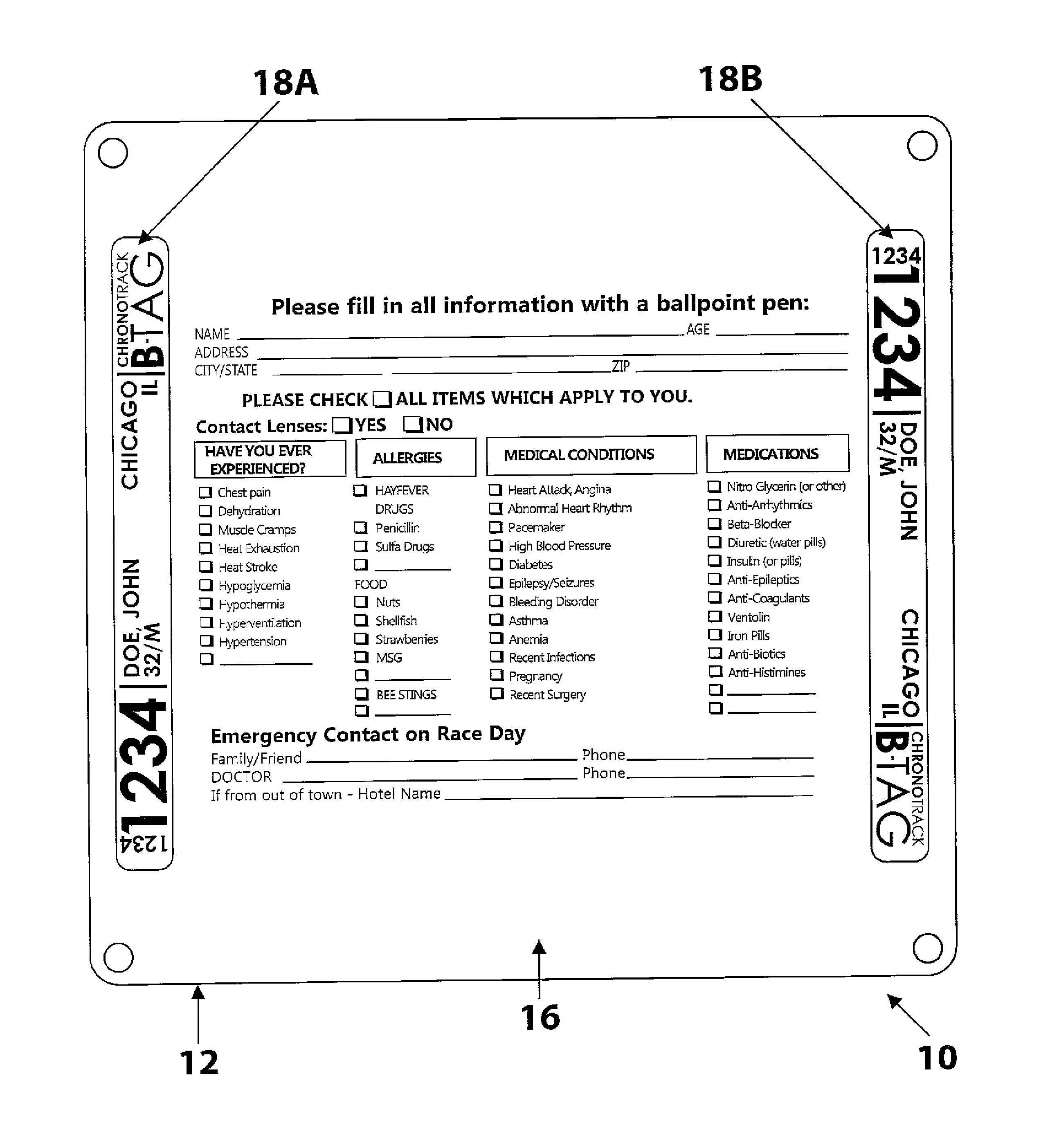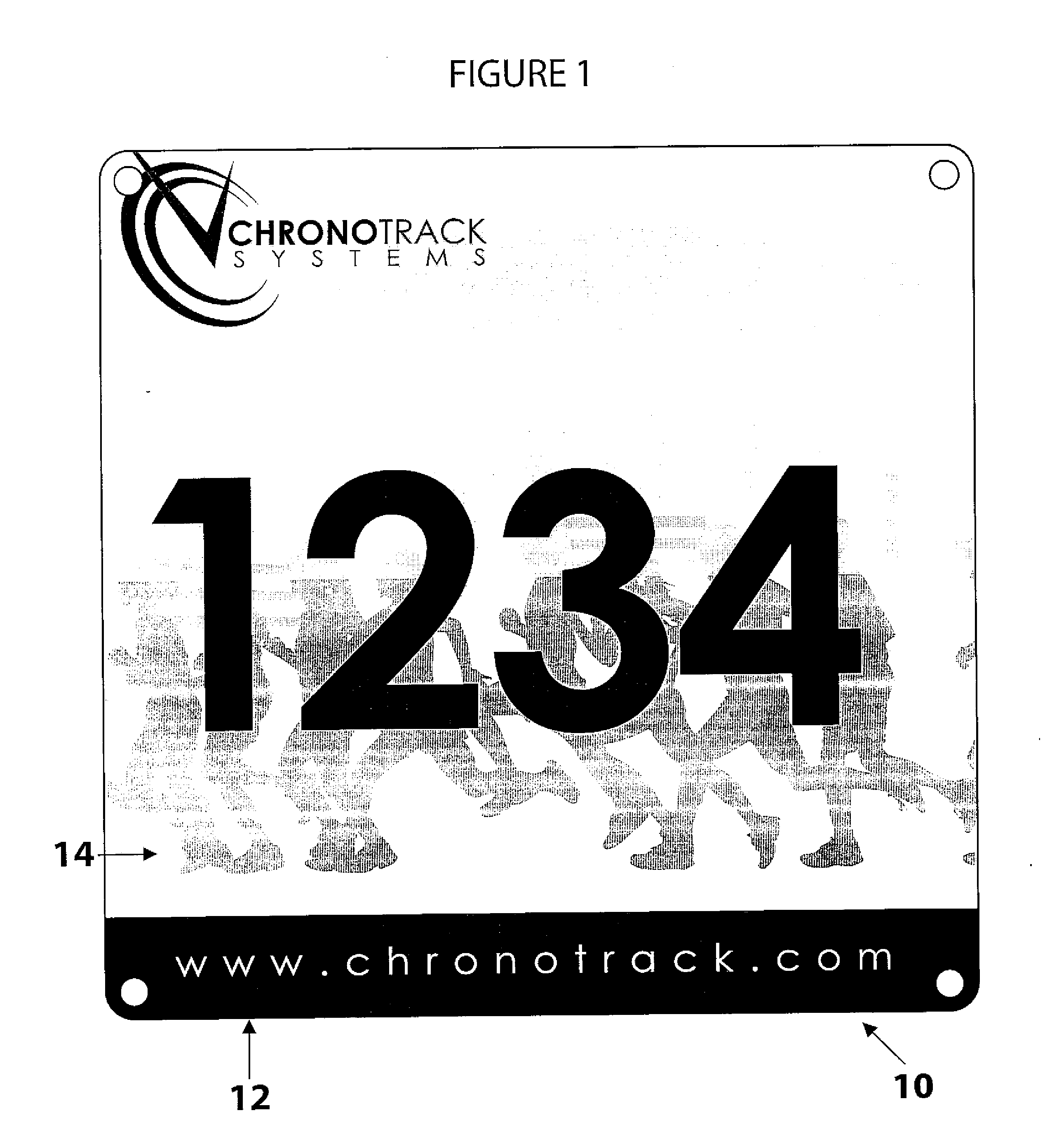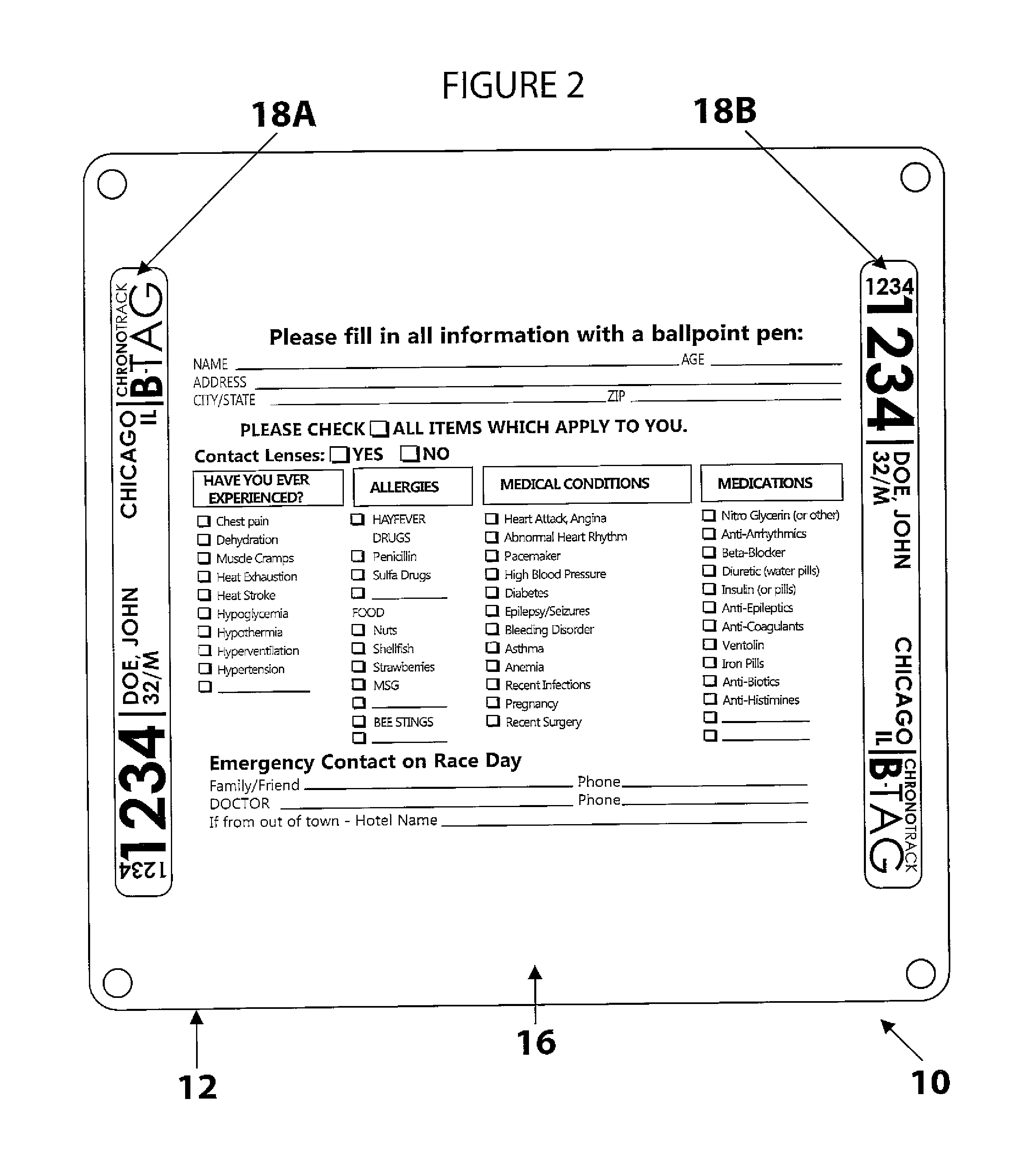Race bib timing device
- Summary
- Abstract
- Description
- Claims
- Application Information
AI Technical Summary
Benefits of technology
Problems solved by technology
Method used
Image
Examples
Embodiment Construction
[0018]FIGS. 1-3 illustrate an improved race bib timing device 10 according to a presently preferred embodiment of the present invention. According to the presently preferred embodiment, the improved race bib timing device includes a race bib 12, having a front surface 14 and a rear surface 16. The race bib 12 is preferably formed of a planar, paper-like material that can be removably affixed to the shirt, shorts or other garment of a participant in an event such as a marathon, road race, track and field event, cross country race, skiing event, biking event, triathalon, or other sporting event where participants are assigned a number for timing and / or ranking purposes. In many instances, the race bib 12 is formed of a water proof and tear resistant material, such as TYVEK. The front surface 14 of the race bib 12 can be used to display data and information, including, but not limited to the participant's assigned entry or race number, the name of the race, or other desired information...
PUM
 Login to View More
Login to View More Abstract
Description
Claims
Application Information
 Login to View More
Login to View More - R&D
- Intellectual Property
- Life Sciences
- Materials
- Tech Scout
- Unparalleled Data Quality
- Higher Quality Content
- 60% Fewer Hallucinations
Browse by: Latest US Patents, China's latest patents, Technical Efficacy Thesaurus, Application Domain, Technology Topic, Popular Technical Reports.
© 2025 PatSnap. All rights reserved.Legal|Privacy policy|Modern Slavery Act Transparency Statement|Sitemap|About US| Contact US: help@patsnap.com



